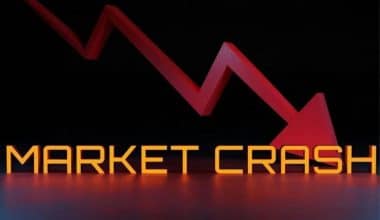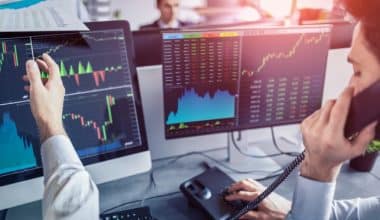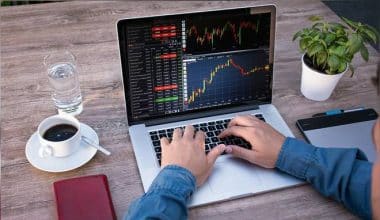Most investors are familiar with the possibilities for trading on the public markets, which include stocks, bonds, commodities, and others. What about secondary markets, though? What distinguishes trading secondary shares on these exchanges from trading on the New York Stock Exchange, for example, daily? Let’s learn about the secondary market, the types, functions, and some examples in this article. We’ll also compare the primary market vs the secondary market and see the differences in this article.
What Is a Secondary Market?
A secondary market is a venue where investors can swap company shares. It means that investors can freely acquire and sell shares without requiring the involvement of the issuing firm. The issuing company does not participate in income production in these transactions among investors, and share valuation is instead dependent on its market performance. In this market, they generate income by the sale of shares from one investor to another.
Some of the entities that can be found in the market are as follows:
- Investors in the general public.
- Brokers and advisory service providers, which include commission brokers and security dealers, among others.
- Non-banking financial companies, insurance companies, banks, and mutual funds are examples of financial intermediaries.
The secondary market is also known as the aftermarket or follow-on public offering where one can trade financial instruments.
Instruments On The Secondary Market
Fixed income instruments, variable income instruments, and hybrid instruments are among the instruments traded in a secondary market.
#1. Fixed-income Instruments
Fixed income instruments are essentially financial securities that guarantee a consistent form of payment, such as interest, and the principal is repaid at maturity. Fixed income securities include debentures, bonds, and preference shares.
- Debentures are unsecured debt instruments, meaning they are not collateralized. Debenture returns are thus dependent on the issuer’s reliability.
- Bonds, on the other hand, are simply a contract between two parties under which a government or firm issues these financial instruments. So, as investors purchase these bonds, the issuing corporation can obtain a huge quantity of capital in this manner. Investors receive interest at regular periods, and they reimburse the principal when the investment matures.
- Individuals who own preference shares in a corporation receive dividends before equity stockholders. Preference shareholders have the right to receive compensation before other shareholders in the event of a company’s insolvency.
#2. Variable Income Instruments
Investing in variable income instruments generates an effective rate of return for the investor and a variety of market factors determine the magnitude of that return. These investments expose investors to greater risks as well as greater returns. Variable income instruments include equity and derivatives.
- Equity shares are financial tools that allow a corporation to raise capital. Furthermore, investors who own equity shares have a claim on a company’s net income as well as its assets if it goes bankrupt.
- Derivatives are a contractual commitment between two parties involving a pay-off for specified performance.
#3. Hybrid Instruments
Hybrid instruments are created by combining two or more different financial instruments. So as an example of a hybrid instrument, consider convertible debentures.
- Convertible debentures are loan or debt securities that one can convert into equity shares after a set length of time.
Functions of Secondary Market
- A stock exchange provides a trading platform for investors to trade bonds, shares, debentures, and other financial instruments.
- One can enter the transactions at any time, and the market allows for active trading, allowing for fast purchases or sales with little price difference between transactions. Furthermore, there is consistency in trading, which boosts the liquidity of assets traded in this market.
- Investors locate a suitable platform, such as a regulated exchange, to liquidate their shares. They can sell the securities they own on numerous stock exchanges.
- It serves as a medium for determining asset pricing in a transaction that is consistent with demand and supply. Also, the information about transaction prices is in the public domain, allowing investors to make informed decisions.
- It is also indicative of a country’s economy and serves as a link between savings and investment. One can mobilize savings through investments in the form of securities.
Types of Secondary Market
Stock exchanges and over-the-counter markets are the two main types of secondary markets.
#1. The Stock Exchange
Stock exchanges are centralized platforms where securities are traded without any contact between buyer and seller. Such platforms include the National Stock Exchange (NSE) and the Bombay Stock Exchange (BSE).
Securities trading transactions on stock exchanges are subject to severe regulations. So, a stock market functions as a guarantor, and counterparty risk is virtually non-existent. This safety net is obtained by levying a greater transaction cost on investments in the form of commissions and also exchange fees.
#2. OTC (over-the-counter) market
Over-the-counter marketplaces are decentralized, with participants trading among themselves. In the absence of governmental monitoring, OTC markets have higher counterparty risks because the parties interact directly with each other. So an example of an over-the-counter market is the foreign exchange market (FOREX).
In an OTC market, there is fierce competition for acquiring more volume. Because of this reason, the price of the securities varies from one seller to the next.
So, aside from the stock exchange and OTC market, there are other auction markets and dealer markets.
The former is essentially a platform for buyers and sellers to agree on the price at which the securities will be traded. Pricing information, including the offer’s bidding price, is also made available to the public.
Another sort of secondary market is the dealer market, in which several dealers indicate the values of specific securities for a transaction. Foreign currency and bonds are generally traded on a dealer market. Let’s look at some examples of the secondary market in the next section.
Secondary Market Transaction Examples
Transactions on the secondary market give liquidity to all types of investors. Their costs are significantly decreased due to the enormous volume of transactions. The following are a few examples of secondary market transactions using securities.
In the market, investors trade securities with other investors rather than the issuer. If an investor wishes to purchase Larsen & Toubro stock, he or she must do so from another investor who holds such shares rather than from L&T directly. As a result, the company will not be involved in the deal.
So, individuals and corporate investors, as well as investment banks, purchase and sell bonds and mutual funds on the secondary market.
Read Also: ECN Brokers: Best 9 for UK, Australian & US Clients (+ Detailed Guide)
The Benefits of the Secondary Market
Investors can conveniently solve their liquidity difficulties in a secondary market. For example, an investor in need of liquid cash can quickly sell the shares he or she owns because the secondary market is flooded with purchasers.
- They serve as guidelines for determining a company’s fair value.
- Price changes in securities occur quickly in response to the availability of fresh information about the company.
- Due to the strict restrictions that control the secondary stock market, investors’ funds are reasonably safe. The laws are strict since the market provides liquidity and capital formation for both investors and businesses.
- When investors’ money is held in the form of securities, it becomes easier to mobilize savings.
Secondary Market Disadvantages
- Prices of securities in a secondary market are subject to considerable volatility, which can result in a sudden and unexpected loss for investors.
- Before purchasing or selling, investors must go through the necessary procedures, which can be time-consuming.
- Brokerage commissions paid on each transaction of buying or selling stocks may reduce investors’ profit margins.
- Investments in a secondary capital market are high risk owing to the effect of many external factors, and the current valuation can change in a matter of minutes.
Primary Market vs Secondary Market
Let’s compare the primary market vs secondary market in the table below
| Primary Market | Secondary Market |
| Securities are first issued in the primary market. Following issuance, such securities are listed on stock exchanges for trading. | A secondary market is where previously issued securities are traded. |
| In the primary market, investors buy shares directly from the issuer. | Investors enter into transactions with one another to buy or sell stocks. As a result, issuers are not participating in such trading. |
| In a primary market, the price of a stock issue remains constant. | The prices of traded securities in a secondary market vary according to demand and supply. |
| Securities sold in the main market generate funds for the issuer. | Transactions in this market produce revenue for investors. |
| The issue of security arises only once and for the first time. | Securities are traded several times in this market. |
| Primary markets lack geographical presence; this cannot be attributable to any organizational structure in and of itself. | Also, on the other hand, a secondary market has an organizational presence in the form of stock exchanges. |
A secondary market’s platform permits stock trading and also allows for the conversion of securities into cash. The liquidity of traded assets is also increased by continuous trading on a secondary market. Investors are thus encouraged to make big corpus creation investments in financial assets available in secondary markets. So, in a volatile market, it is best to seek the advice of fund managers to get the most of your investment.
Conclusion
As new financial instruments become accessible, the number of secondary markets continues to grow. There may be several secondary markets for assets such as mortgages and others but then, all these make trading effortless.
Secondary Market Frequently Asked Questions
What are the products in the secondary market?
Products in the secondary market include equity shares, bonds, preference shares, treasury bills, debentures, etc.
Who are the major players in the secondary market?
The major players in the market are Brokerage and Advisory services (commission brokers, security dealers, and more); Financial Intermediaries (Banks, Insurance companies, Mutual Fund, Non-Banking Financial companies); and retail investors.
What are the characteristics of the secondary market?
1. It creates liquidity: The major characteristic of the secondary market is to create liquidity in securities.
2. It comes after the primary market
3 It has a particular place.
4. It encourages new investment.
What is the primary and secondary market?
The primary market is where they create the securities, while the secondary market is where investors trade those securities. In the primary market, companies sell new stocks and bonds to the public for the first time, such as with an initial public offering (IPO).
What are secondary market examples?
Examples of popular secondary markets are the National Stock Exchange (NSE), the New York Stock Exchange (NYSE), the NASDAQ, and the London Stock Exchange (LSE).
- Cash Ratio: Formula, Calculations & Examples
- Contingent Beneficiary: Definition, Characteristics & all you should know
- ACCOUNTING CYCLE: What is Accounting Cycle & All you Need
- ACCOUNTING PROCESS: Understanding the 8 Steps in the Accounting Cycle
- ECN Brokers: Best 9 for UK, Australian & US Clients (+ Detailed Guide)
- MARK TO MARKET (MTM) ACCOUNTING: Definition And How It Works






